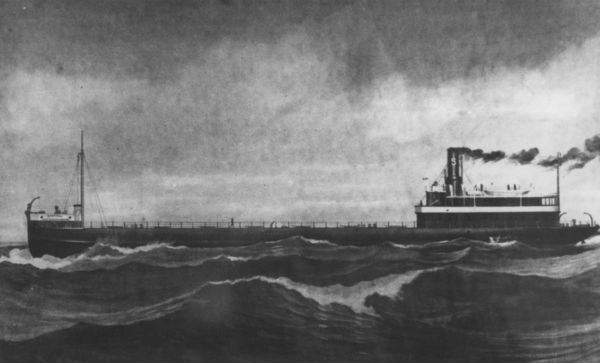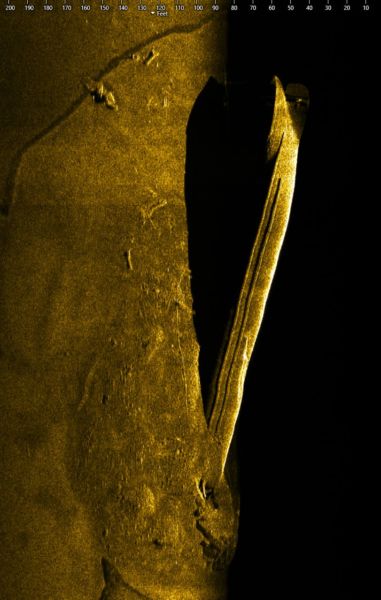“If you wish to perceive immediately it’s a must to search yesterday.”
- Pearl S. Buck, American novelist (1892-1973)
Michigan is a water state—in actual fact, it has the very best share of water out of all states within the U.S.—41.5% to be precise. Lake Huron, which is in Michigan and Ontario, is legendary for its treacherous waters, ice, and fog, which have claimed the lives of many sailors, such that it was nicknamed “Shipwreck Alley.” There are mysteries nonetheless on the market, beneath the waters, simply ready to be found. Mysteries, akin to shipwrecks, that maintain the tales from over 200 years of Nice Lakes delivery and numerous sailors and passengers who traveled the freshwater seas.
Ever since Thunder Bay Nationwide Marine Sanctuary was designated in 2000 as the primary nationwide marine sanctuary within the Nice Lakes, employees and companions have undertaken a number of expeditions to seek for shipwrecks, and have even found some that have been misplaced for many years. Most likely some of the notable discoveries throughout the sanctuary since designation is that of the steamer Choctaw (1892-1915) and picket bulk freighter Ohio (1873-1894) in historic delivery lanes off Presque Isle, Michigan in Lake Huron.
On a cool, foggy morning on July 12, 1915, the freighter Wahcondah was touring east from Fort William, Ontario, carrying a cargo of wheat. The dense fog made it tough to see, and at 5:30 a.m. the crew seen one other ship in Wahcondah’s path—nevertheless it was too late. That ship was Choctaw, carrying a cargo of coal together with Captain Charles A. Fox and his crew of 21 males. The 267-foot, metal semi-whaleback ship sank quickly, and all lives on board have been rescued. Regardless of search efforts, the precise location of the sunken 1,573 gross ton metal freighter—which was an revolutionary “monitor” design—remained a thriller for about 100 years. Archaeologists and shipwreck hunters have looked for Choctaw for years, and in 2011, a staff of NOAA researchers, college companions, and highschool college students from Saginaw, Michigan got here near discovering it.

Along with defending and educating the general public about identified maritime heritage assets within the sanctuary, the 2009 closing administration plan for the sanctuary outlined a Analysis Motion Plan that encourages sanctuary employees and companions to find, doc, and analyze shipwreck websites of curiosity utilizing historic and archival analysis and superior applied sciences akin to side-scan sonar. In 2014, after almost seven years of analysis and stakeholder engagement and enter, NOAA expanded the boundaries of Thunder Bay Nationwide Marine Sanctuary to 4,300 sq. miles with a view to shield a further 100 identified and suspected historic shipwreck websites.
This allowed for an exploratory analysis challenge funded by NOAA’s Workplace of Ocean Exploration and Analysis, the place high- -resolution sonars have been used to map the underside of Lake Huron throughout the northern extents of the expanded sanctuary boundary. Two targets of curiosity have been found and investigated. Observe-up investigations carried out between June and August of 2017 included using two underwater robots—an autonomous underwater automobile (AUV) from Michigan Technological College’s Nice Lakes Analysis Middle and a remotely operated automobile supplied and piloted by Northwestern Michigan Faculty, in addition to direct observations via technical scuba diving.

After rigorously observing the options of the wrecks and evaluating the pictures and movies to historic information of the vessels, Thunder Bay Nationwide Marine Sanctuary formally introduced the invention of Choctaw and Ohio. When Choctaw’s wreck website was discovered, Captain Fox’s granddaughter, Ruth Schwartz Fisher, and her niece, Diane Hausler, expressed how relieved they have been to lastly have closure and that the invention introduced their household again collectively.
Apparently, whereas offering closure on the resting locations of Choctaw and Ohio, this challenge additionally re-opened the door to a different thriller—the whereabouts of the schooner-barge Ironton, the vessel that collided with Ohio. Researchers are nonetheless working to uncover that thriller immediately.
Holding Shipwrecks and Divers Secure
After a traditionally vital shipwreck is confirmed in sanctuary waters, it turns into a cultural useful resource that’s routinely monitored and guarded. In 2021, Thunder Bay Nationwide Marine Sanctuary employees got down to assess the positioning, and doc and monitor the wreck of Choctaw from a a lot bigger Coast Guard vessel platform. The staff was capable of get glorious underwater footage of the historic website utilizing an ROV, permitting for nearer statement of the wreck’s options. The sanctuary plans to position a mooring buoy on the wreck website, which is about 300 toes deep, with a view to shield the wreck from unintended anchor injury and guarantee leisure scuba diving security.
Uncovering Mysteries and Participating Communities
When a historic shipwreck is found, it’s introduced again to life. Not just for shipwreck hunters, archaeologists, maritime history-lovers, and the surviving members of the family of these misplaced at sea, however for the encompassing neighborhood, together with Okay-12 college students. Along with defending the wreck websites, the sanctuary works with companions to make sure that these findings get translated into oral and visible historical past in museums, movies, 360 diploma digital experiences, and different outreach merchandise to maintain the tales alive and strengthen the encompassing neighborhood’s connection to their native waters and American maritime historical past.
The expeditions that led to the invention of Choctaw have been funded by a grant from NOAA’s Workplace of Ocean Exploration and Analysis, and the challenge was made doable via analysis partnerships with NOAA’s Nice Lakes Environmental Analysis Laboratory, College of Delaware, Michigan Technological College, Northwest Michigan Faculty, the Michigan Division of Pure Assets, the USA Coast Guard, and College of North Carolina Wilmington’s Undersea Automobile Program.
Rachel Plunkett is the author/editor for NOAA’s Workplace of Nationwide Marine Sanctuaries
Movies and Different Assets
Discover the Blue 360: Shipwreck Alley
Thunder Bay Shipwreck Movies on YouTube
Pushing the Boundaries: Know-how-Pushed Exploration
Historical past Meets Know-how in Shipwreck Alley
Discovering historical past: The invention of two misplaced shipwrecks
Researchers Uncover Two Historic Shipwrecks in Thunder Bay
Earth is Blue: Discovering Historical past
Nice Lakes Maritime Assortment Archive



